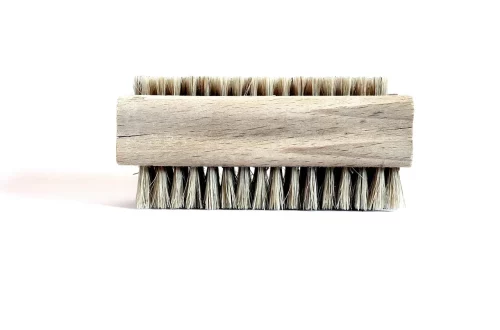
How Many Calories Are in an Aperol Spritz? Find Out Here!
When the sun shines, and the warmth of summer fills the air, few drinks evoke the essence of leisurely afternoons like the Aperol Spritz. This vibrant cocktail, with its striking orange hue, has become a staple in outdoor gatherings, beach parties, and sophisticated soirées alike. Originating from Italy, the Aperol Spritz is not just a drink; it’s an experience. The combination of Aperol, Prosecco, and soda water creates a refreshing and slightly bitter flavor profile that captivates the senses.
As people become more health-conscious, understanding the calorie content of beverages has gained importance. Cocktails, in general, can often be deceptive, packing more calories than one might anticipate due to their sweet ingredients and mixers. The Aperol Spritz, known for its delightful taste, also raises questions about its nutritional value. While it’s a beloved choice for many, it’s essential to consider how it fits into a balanced diet.
The allure of the Aperol Spritz goes beyond its taste; it also encompasses its cultural significance and the way it brings people together. Whether enjoyed at a bustling café in Venice or during a backyard gathering, this cocktail offers a sense of relaxation and celebration. However, as with all indulgences, moderation is key. So, how many calories does this popular drink contain? Let’s delve deeper into the caloric content and what it means for those who enjoy this Italian classic.
Understanding the Ingredients of an Aperol Spritz
To comprehend the calorie content of an Aperol Spritz, it’s crucial to first explore its ingredients. The classic recipe consists of three primary components: Aperol, Prosecco, and soda water. Each ingredient contributes not only to the flavor but also to the overall caloric value of the cocktail.
Aperol, the star of the drink, is an Italian aperitif with a unique blend of bitter and sweet flavors derived from herbs and roots. Typically, a standard serving of Aperol contains around 100 calories per 1.5 ounces. The vibrant orange color comes from its infusion of various botanicals, including rhubarb and orange peel, which also add to its aromatic profile.
Next, we have Prosecco, a sparkling wine that adds effervescence and a touch of sweetness to the Spritz. A typical serving of Prosecco (about 3 ounces) carries approximately 60 to 80 calories, depending on the brand and specific sweetness level. The bubbles in Prosecco not only enhance the drinking experience but also contribute to the cocktail’s light and refreshing nature.
Lastly, soda water, which is used to top off the drink, adds minimal calories—essentially zero. Its primary role is to dilute the mixture slightly and provide a refreshing finish without adding any significant caloric load.
When combined, these ingredients create a harmonious balance of flavors, but they also accumulate calories. Understanding this composition helps individuals make informed choices about their consumption. Whether you’re enjoying a single Aperol Spritz or considering a few over an evening, being aware of the caloric contributions from each component can aid in your overall dietary planning.
The Caloric Breakdown: How Many Calories Are in an Aperol Spritz?
Now that we have a grasp on the individual components, let’s calculate the total calorie content of a typical Aperol Spritz. A standard recipe usually consists of 3 ounces of Prosecco, 2 ounces of Aperol, and a splash of soda water.
By analyzing the numbers, we can see that:
– **Aperol (2 ounces)**: Approximately 133 calories
– **Prosecco (3 ounces)**: Around 60 to 80 calories
Adding these together gives a total of roughly 193 to 213 calories per drink. This estimate can vary slightly based on the specific brands of Prosecco and Aperol used, as some may contain different caloric values.
It’s worth noting that many people enjoy customizing their Aperol Spritz by adjusting the ratio of ingredients or adding garnishes like an orange slice. While these variations can enhance the drink’s presentation and flavor, they can also impact the calorie count. For instance, adding more Aperol will increase the caloric intake, while using a less sweet Prosecco may lower it.
Understanding the caloric breakdown can help individuals enjoy this delightful cocktail while keeping track of their overall caloric intake. Whether you’re counting calories for weight management or simply trying to be more mindful of what you consume, knowing the caloric content of an Aperol Spritz can aid in making informed decisions without sacrificing enjoyment.
Alternative Options: Lower-Calorie Versions of the Aperol Spritz
For those looking to enjoy the taste of an Aperol Spritz but with fewer calories, there are several alternative approaches to consider. By making a few simple adjustments to the traditional recipe, you can create a lighter version that still retains the essence of this beloved cocktail.
One popular method is to reduce the amount of Aperol used. Since Aperol is the primary source of calories in the drink, cutting back to 1 ounce instead of 2 can significantly lower the total caloric content, dropping it to around 130 to 150 calories, depending on the Prosecco choice.
Another option is to substitute Prosecco with a lower-calorie sparkling wine or a sparkling water infused with natural flavors. This switch not only reduces calories but also adds a refreshing twist to the drink. Many brands offer low-calorie or zero-calorie sparkling wines that can be an excellent alternative for those looking to cut back without compromising on taste.
Additionally, consider using flavored soda water or tonic water with no added sugars. These options can impart a new layer of flavor to the drink while keeping the calorie count low. Experimenting with fresh herbs or citrus slices can also enhance the cocktail’s taste without adding significant calories.
Lastly, serving the Aperol Spritz in a smaller glass can be another effective strategy. By enjoying a smaller portion, you can savor the flavors while still keeping the calorie count in check. Remember, the goal is to enjoy the experience without overindulging.
These alternatives allow you to relish the Aperol Spritz while being mindful of your caloric intake. Finding a balance between enjoyment and moderation is key, especially when it comes to cocktails.
Enjoying the Aperol Spritz Mindfully
Indulging in an Aperol Spritz can be a delightful experience, but like all pleasures, it’s essential to enjoy it mindfully. Understanding the ingredients, caloric content, and making conscious choices can enhance your enjoyment without guilt.
First and foremost, it’s crucial to be aware of your overall drinking habits. Having a clear understanding of how many cocktails you consume in a sitting can help you maintain a balanced approach. It’s easy to lose track during social gatherings, but being mindful of your intake can prevent unintended excess.
Pairing your Aperol Spritz with food can also create a more satisfying experience. Enjoying it with light appetizers, such as olives, cheese, or charcuterie, can complement the flavors of the drink while balancing the overall meal. This approach allows you to enjoy the cocktail without solely relying on it for enjoyment.
Moreover, consider setting limits for yourself when it comes to alcoholic beverages. Whether it’s choosing to have only one drink or alternating between alcoholic and non-alcoholic options, establishing boundaries can help you enjoy your Aperol Spritz without overindulgence.
Lastly, savor the moment. Take your time to appreciate the flavors, the atmosphere, and the company you’re with. Enjoying a drink is as much about the overall experience as it is about the taste. By being present and mindful, you can maximize your enjoyment while staying within your caloric goals.
In summary, the Aperol Spritz is a delightful cocktail with a moderate calorie count that can fit into a balanced lifestyle. By understanding its ingredients and making conscious choices, you can enjoy this refreshing drink in moderation, enhancing your overall experience.
**Disclaimer:** This article is not intended as medical advice. For any health-related concerns or dietary changes, it is always best to consult with a healthcare professional.




